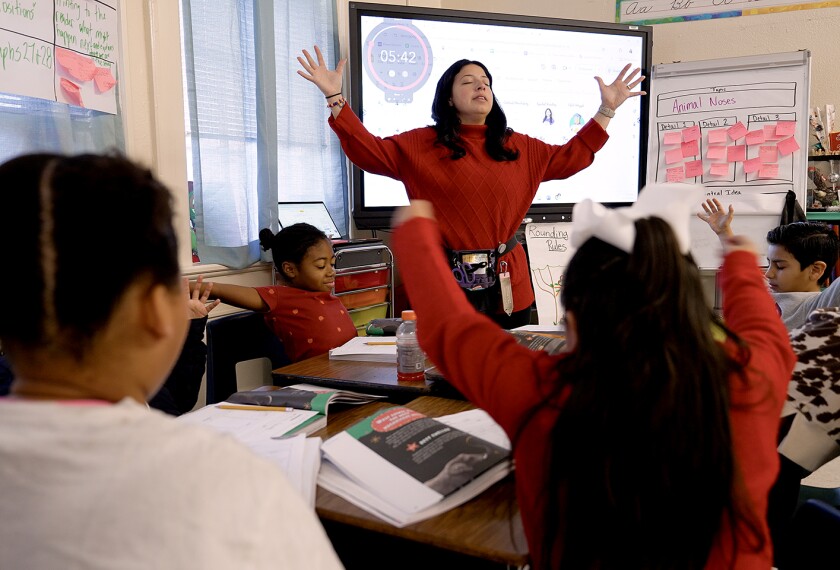The U.S. Centers for Disease Control and Prevention has provided schools and parents with a concise summary of guidelines on how to prevent the spread of drug-resistant staph infections that have caused concern nationwide.
In the guidelines, federal health officials recommend frequent handwashing to prevent the spread of the bacterium called methicillin-resistant Staphylococcus aureus, or MRSA. Students should not share personal items that come into contact with bare skin, such as towels or razors, and should disinfect open wounds immediately and cover them with clean, dry bandages, the Atlanta-based CDC recommends.
The guidelines, released Oct. 19, also say that schools need not be closed for disinfection because of a local MRSA case, as long as other recommended precautions are taken.
“In most cases, it is not necessary to close schools because of an MRSA infection in a student,” the guidelines say. “It is important to note that MRSA transmission can be prevented by simple measures such as hand hygiene and covering infections.”
Read the related story,
A report from the CDC earlier this month, published in the Journal of the American Medical Association, estimated that MRSA is linked to more U.S. deaths each year than the virus that causes AIDS. The news made headlines nationwide.
MRSA is primarily found in health-care settings, and children ages 5 to 17 have the lowest rate of infection. Many recent news stories, however, have focused on children who became sick who had not recently been hospitalized. Four deaths of minors—one each in Mississippi, New Hampshire, New York, and Virginia—have been reported in October.
Infections have also been reported among students in Delaware, Maryland, Mississippi, and New Hampshire, and at a boarding school in Washington, D.C., which closed for a day. Many cases were reported among athletes, who tend to have more skin abrasions and may have frequent skin-to-skin contact through their sports.
States React
Most commonly, MRSA infections look like red, inflamed skin eruptions that can be treated with or without antibiotics, though the bacterium is resistant to the most common drugs. If the infection spreads to the bloodstream, however, it can be much harder to treat. About 25 percent to 30 percent of the U.S. population carries staph without becoming ill, according to health officials. About 1 percent carries the more dangerous MRSA strain. None of the strains causes infection until it enters the body through a break in the skin.
On Oct. 25, Gov. Tim Kaine of Virginia moved to make MRSA an illness that must be reported to state health officials, after the death of a 17-year-old high school senior in southwestern Virginia who had been infected by the bacterium. In Connecticut, an MRSA telephone hotline got more than 240 inquiries on its first day of operation.
School districts have reported engaging in intensive cleaning in an effort to quell the spread of the bacterium. After the death Oct. 15 of Ashton Bonds, the Virginia teenager, his school and the 20 others in the 11,000-student Bedford County district closed for a daylong cleaning.
Ryan Edwards, the spokesman for the district, said the closings were mainly a way to ease worries and educate students and parents, not a matter of necessity from a health standpoint.
“If the general public in the U.S. had not been so ill-informed about this type of bacteria, we would not have closed our schools,” said Mr. Edwards, who believes that the community did not understand, at first, that the infection is generally spread by skin-to-skin contact. “We recognized a serious fear and a serious anxiety with our public, with our parents, and with our students.”
Focus on Hygiene
Though cleaning athletic equipment before and after use is helpful in stopping the spread of infection, experts note that teaching students the importance of personal cleanliness is just as important as cleaning a school locker room. Schools also need to stress the importance of handwashing and general cleanliness, and pay attention to small bumps and lesions on students’ skin that might have once been dismissed as pimples or insect bites.
“This is a cleanliness issue. It doesn’t matter if it’s bacterial, or fungal, or viral. Most of the time, [infections] can be drawn back to hygiene,” said James L. Thornton, the head athletic trainer and director of sports medicine at Clarion University of Pennsylvania, who is a member of the board of directors of the National Athletic Trainers’ Association in Dallas.
“We see kids that will practice or play a game, and following that practice or game, will not shower. Even though we keep hammering them,” Mr. Thornton said.
Tia Campbell, the school health specialist for the Virginia Department of Education, said: “What the epidemiologists are telling us is that our routine cleaning should be sufficient. Staph is on us and among us. You may do deep cleaning, but when you open the doors to the building the next morning, you’ve reintroduced staph again.”
Gerald N. Tirozzi, the executive director of the Reston, Va.-based National Association of Secondary School Principals, said that his organization plans to inform its members in its regular newsletter that MRSA is an important concern, especially among athletes.
“Our strong suggestion would be to err on the side of overreacting,” said Mr. Tirozzi, who said he battled a serious staph infection this year after back surgery. Doctors do not know whether he was infected with the drug-resistant strain, he said.
“I can fully understand how serious this can be,” Mr. Tirozzi said.




